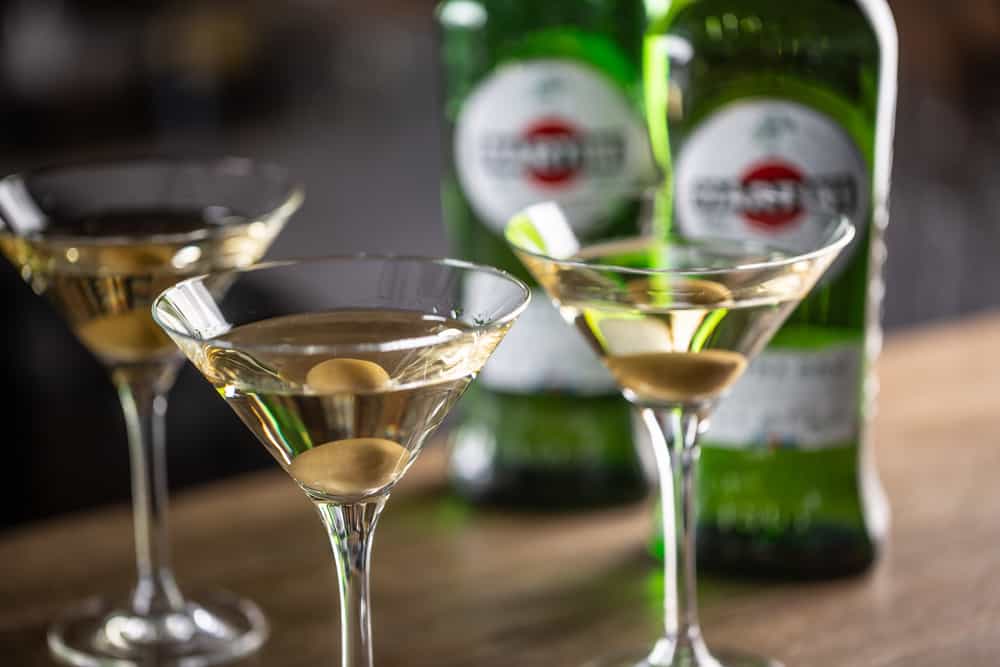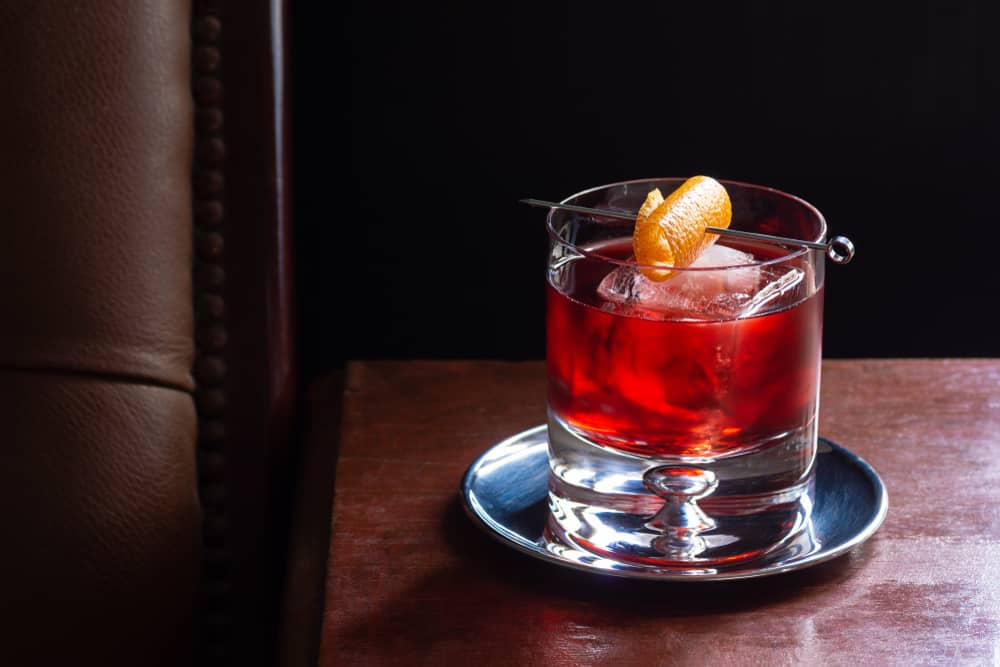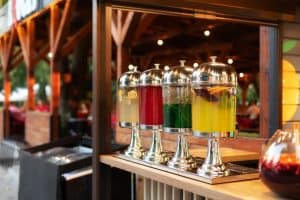
Vermouth is a fortified and aromatized wine. To fully understand this drink, let’s look at what fortified and aromatized mean. Fortifying in bartending means adding alcohol to already alcoholic wine. The alcohol added to vermouth is usually brandy.
The added alcohol serves some purposes. It changes the taste and increases the life span of vermouth. So vermouth typically lasts 3-4 weeks more than other alcoholic drinks.
Aromatizing a wine, on the other hand, means infusing wine with herbs, fruit, spices, and any other thing that’ll define the flavor.
Now that you know the constituents of vermouth, how do you drink dry vermouth?
The most popular way to drink vermouth is in cocktails like Martinis. Vermouth can also be drunk neat, on the rocks, with sweet vermouth, and as a spritzer.
Let’s look at a brief history of vermouth, types of vermouth, and how to drink dry vermouth.
A Brief History of Vermouth

As early as 1000 BC, the Chinese have been adding botanicals to wine for medicinal purposes. But it wasn’t until the mid-17th century that vermouth got the name we call it today.
The word ‘vermouth’ was coined from the German ‘wermut’, which means wormwood (a common spice in vermouth today). Later in the 17th century, vermouth was split into two major kinds, red and white, when Antonio Benedetto Carpano created his sweet vermouth.
As more people drank vermouth, people stopped seeing it as medicinal and started to take it as an aperitif before dinner or a leisure drink. In the 1800s, it became a common cocktail ingredient.
How To Drink Dry Vermouth

Here are the best ways to enjoy dry vermouth.
In a Cocktail
If you haven’t tried it, you’re missing out. Dry vermouth can be mixed with gin to make a Martini or Gibson. How exactly do you make a Martini with Dry Vermouth?
The classic dry gin Martini is just a combination of gin and dry white vermouth. Sounds easy, but where most people mess up is in the ratio of these ingredients that are meant to be combined.
To start making your Martini, put some ice in a cocktail glass and add 2 Oz of London dry gin. This isn’t the standard, so you’re free to experiment. Add 1 Oz of your dry vermouth to the mix, and you’re almost done.
This step is optional, but most prefer to add a couple of dashes of fruit flavoring, like orange bitters. If you’re adding, 2 dashes will do. Next, stir for 20 seconds to ensure everything is well combined, then pour into the Martini cocktail glass.
To make it perfect, you can add lemon peel garnish and enjoy your Martini Cocktail.
Making a Gibson is almost the same process. Add 2 Oz gin into an ice-filled mixing glass. Next, add 1 Oz dry vermouth, then stir for a few seconds until it’s well mixed. Strain the mix into a Martini glass and garnish with 3 cocktail onions. Your Gibson is ready to enjoy.
Straight
Drinking dry vermouth neat or straight is definitely an option. In the US and UK, vermouth is seen as just a cocktail ingredient, but in many other parts of the world, people take their vermouth without anything else in the glass and enjoy it.
On the Rocks
Vermouth is best enjoyed cold, so you might want to pour it over ice to get the most out of your bottle. Even if you don’t have ice, refrigerating the bottle will yield almost the same result.
Spritzers
A spritzer is a mixture of wine and soda and is very easy to make. Simply mix your white vermouth with a splash of soda or fruit and enjoy.
With Sweet Vermouth
If you’ve heard people bandying around the word “perfect” before ordering drinks like Negroni or Manhattan, you’re about to find out why.
When someone orders a “perfect Manhattan,” they mean they want a blend of dry and sweet vermouth in equal proportions. So mixing dry and sweet vermouths to make cocktail variations has become more common over the years.
Dry Vermouth vs. Sweet Vermouth

There are many types of vermouth, but the two most popular are dry and sweet vermouth. Let’s look at the differences between these two.
Sweet Vermouth
Sweet or red vermouth has a round, sweet and rich taste. It often contains more sugar (about 100 grams more) and is physically darker than white vermouth.
Sweet vermouth has a characteristic red color and functions slightly like syrup in bartending. It’s often mixed with other dark spirits to make cocktails like Negroni.
Dry Vermouth
Also known as white vermouth, dry vermouth has a white wine base and is lighter and more delicate than red vermouth. There are two kinds of white vermouth, the blanc or bianco, which is lightly sweetened, and then there’s dry vermouth which is unsweetened.
Dry vermouth adds acidity and minerality to a cocktail. It’s more potent than red vermouth with less sugar. Dry vermouth has a very light yellow or clear appearance.
How To Store Vermouth

Open vermouth bottles should be kept in the fridge at all times. This slows the oxidation process of wine and helps vermouth retain its quality.
How long do open vermouth bottles last in the fridge, you ask? One month more or less. When you notice the liquid changing color, it’s time to throw it out.
If you cook with vermouth, it can be used for a few months before it gets too bitter to be used.
Final Thoughts
Whether you decide to make a Martini or drink your dry vermouth on the rocks is up to you. Ensure you store it properly after drinking, so it doesn’t lose its flavor.
Frequently Asked Questions
You can enjoy your dry vermouth with french lemon or orange juice and simple syrup.
Yes, you can, but not as fast as regular alcoholic drinks. Vermouth has more flavor and depth than regular wines because of the fortification and addition of botanicals, so it’s safe for day drinking.









